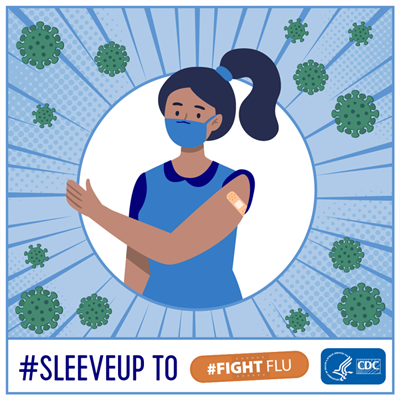Resource Guide on How to Respond to Problems with Purchasing Needles for Influenza and Other Routine Vaccinations
CDC has received reports from vaccination providers describing challenges in procuring sufficient quantities of needles or needle/syringe sets to meet the demand for influenza and other routine vaccinations. To investigate and respond to these reports, CDC collaborated with the Office of the Assistant Secretary for Preparedness and Response and the Food and Drug Administration (FDA). Based on discussions with industry partners, there is no indication of a widespread shortage or supply interruption. Adequate supplies are expected to be available to support both the 2020–2021 influenza vaccination program and routine vaccination efforts. The ancillary supplies required to support COVID-19 vaccination efforts, including needles and syringes, are being drawn from a separate supply chain and are not expected to divert resources required to support influenza and routine child and adult vaccination. Healthcare providers should not be procuring injection devices for COVID-19 vaccine administration, as these materials will be supplied in conjunction with the vaccine.
Providers have an important role in the supply chain process and can help maintain ancillary supply availability by ensuring that they are ordering quantities of product in line with current patient care needs rather than to meet an anticipated greater need. Providers should maintain their regular ordering patterns and avoid stockpiling devices or building greater inventory levels.
There are many different types of syringes and needles and it is important to carefully select the device according to the type of injection to be administered. For example, the length and gauge of needle and type of syringe must be suitable for the type of injection and the injection site. Patient age, gender, and weight are other key factors in the selection process.
For intramuscular administration of influenza vaccine, providers should use a 22–25-gauge needle. Needle length best practices are summarized in this tablepdf icon and in the General Best Practice Guidelines for Immunization. Summaries of the practical considerations for administration of vaccines to childrenpdf icon and adultspdf icon are also available.
Because demand for influenza vaccination in some locations may be high, supplies of specific types of needles and needle/syringe sets may be limited or even temporarily unavailable. To minimize the impact of such interruptions and to ensure providers can procure these supplies, manufacturers and distributors have implemented an allocation system to limit the quantities of a specific device that may be purchased at a given time. However, distributors may offer several different brands or product lines that meet general standards. Therefore, it is important to always ask about availability of comparable products whenever allocation limits for the usual or preferred products have been met. As a reminder, under no circumstance should a vaccination provider administer a vaccine from the same syringe to more than one patient, even if the needle is changed. Providers should not use supplies with torn or compromised packaging or those that are past the marked expiration date.
The manufacturers of injection devices have agreements with one or more medical/surgical supply distributors. Most institutions or facilities use agreements with one or more distributors to govern the brands and types of products that may be procured. Automated purchasing systems or procedures often default to specific products based on cost or past purchasing practices. The full array of choices available under the agreement may not always be apparent. Therefore, the following should be considered if facilities encounter difficulty in purchasing needles or needle/syringe sets:
- Have your procurement officials asked distributors about all comparable products covered under existing agreements that have available allocation?
- Does your institution or facility’s agreement with the distributor allow for substitution with comparable products not already included in the existing agreement? If so, has the availability of allocations for these substitute products been explored with distributors?
- Can your institution or facility work with alternate suppliers, including those with which there is not an existing contract? If so, have these alternate suppliers been contacted about what products are available for purchase?
- Are your facilities monitoring usage to ensure that safety-engineered needles or needle/syringe sets are being used exclusively for vaccine administration and not for medication preparation/aspiration or blood/specimen collection, where conventional needles may be more appropriate?
- Has your authorized supply distributor enacted the appropriate allocation levels and controls to ensure the supply of product from manufacturers designated for your facilities is being provided in a timely manner?
If all these avenues have been explored and supplies that meet the recommended standard are still unavailable, please contact the Immunization Service Center at 800-232-4636 (800-CDC-INFO) or by email at nipinfo@cdc.gov.
In addition, FDA encourages healthcare facilities to report any supply disruptions to the device shortages mailbox at deviceshortages@fda.hhs.gov. This mailbox is closely monitored and has proven to be a valuable surveillance resource to assist FDA efforts to detect and mitigate potential supply chain disruption.
